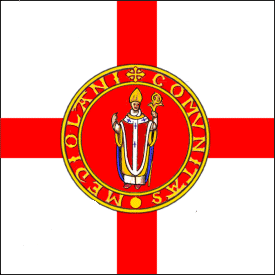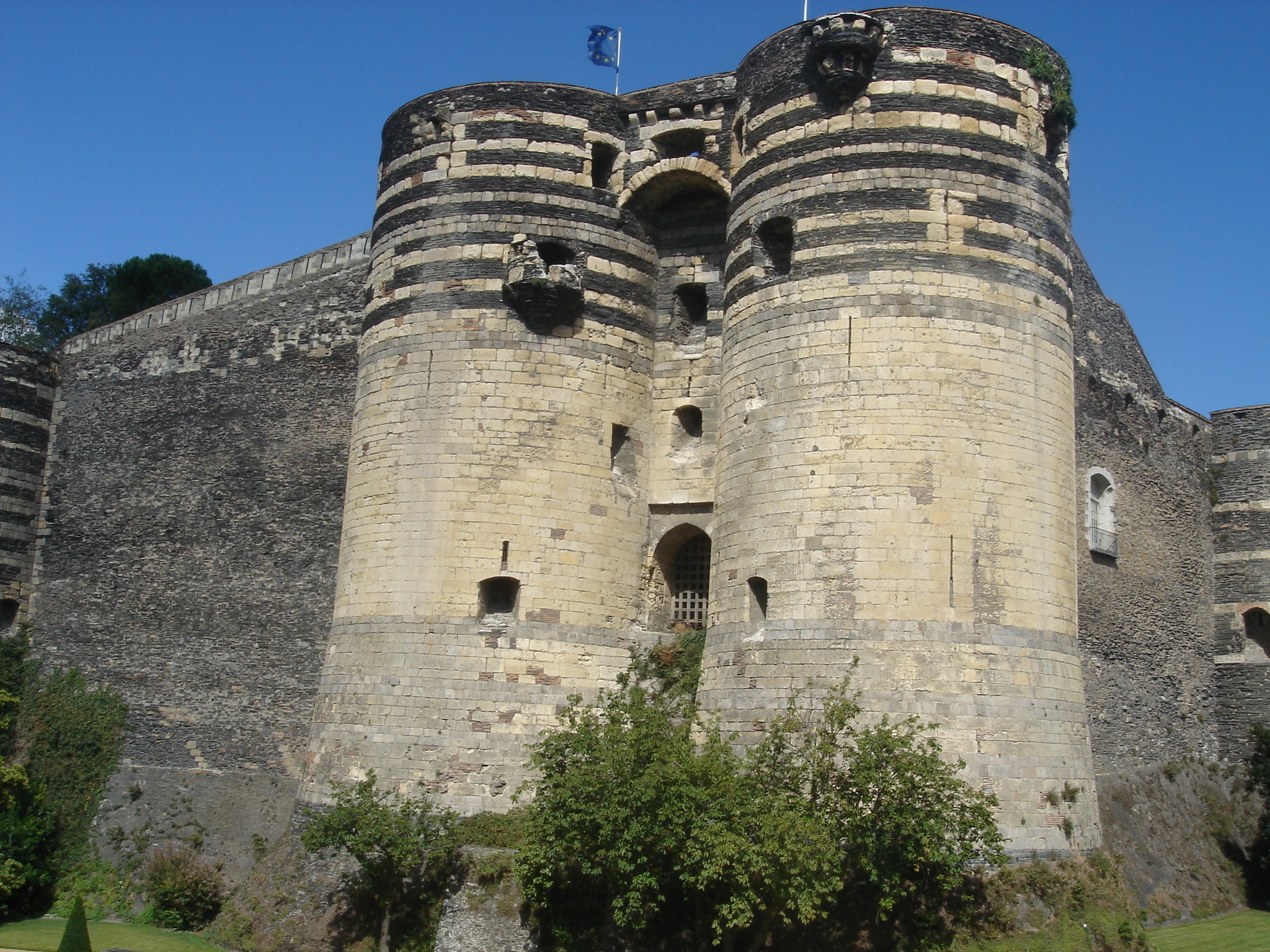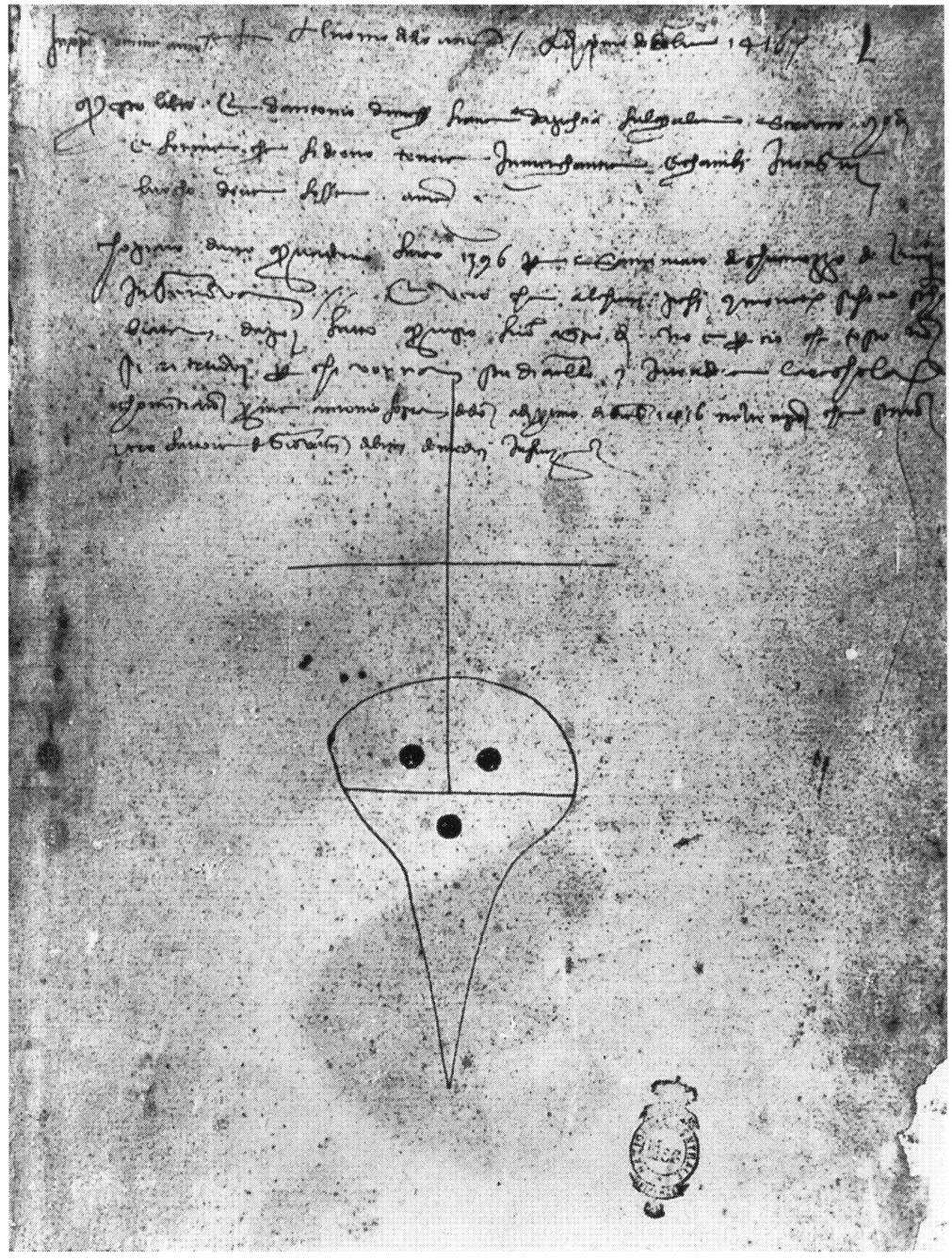|
Milanese War Of Succession
The Milanese War of Succession was a war of succession over the Duchy of Milan from the death of duke Filippo Maria Visconti on 13 August 1447 to the Treaty of Lodi on 9 April 1454. Summary Many pretenders claimed to be the rightful successor to Filippo Maria Visconti, who died without a male heir. These included the capable condottiero Francesco Sforza (husband of Visconti's illegitimate daughter), King Alfonso V of Aragon and Naples (to whom Visconti had bequeathed the Duchy in his will) supported by the influential Bracceschi family, Duke Charles of Orléans (son of Visconti's half-sister), Duke Louis of Savoy (brother of Visconti's widow), archdukes Albert IV and Sigismund of Austria (great-grandchildren of Bernabò Visconti), and Emperor Frederick III (who declared the Duchy should revert to the Holy Roman Empire on the extinction of its male line of succession). However, the citizens of Milan and several Lombard towns loyal to Milan proclaimed the Golden Ambrosia ... [...More Info...] [...Related Items...] OR: [Wikipedia] [Google] [Baidu] |
Wars In Lombardy
The Wars in Lombardy were a series of conflicts between the Republic of Venice and the Duchy of Milan and their respective allies, fought in four campaigns in a struggle for hegemony in Northern Italy that ravaged the economy of Lombardy and weakened the power of Venice. They lasted from 1423 until the signing of the Treaty of Lodi in 1454. During their course, the political structure of Italy was transformed: out of a competitive congeries of communes and city-states emerged the five major Italian territorial powers that would make up the map of Italy for the remainder of the 15th century and the beginning of the Italian Wars at the turn of the 16th century. They were Venice, Milan, Florence, the Papal States and Naples. Important cultural centers of Tuscany and Northern Italy—Siena, Pisa, Urbino, Mantua, Ferrara—became politically marginalized. The wars, which were both a result and cause of Venetian involvement in the power politics of mainland Italy, found ... [...More Info...] [...Related Items...] OR: [Wikipedia] [Google] [Baidu] |
Flag Of The Duchy Of Milan (1450)
A flag is a piece of textile, fabric (most often rectangular or quadrilateral) with a distinctive design and colours. It is used as a symbol, a signalling device, or for decoration. The term ''flag'' is also used to refer to the graphic design employed, and flags have evolved into a general tool for rudimentary signalling and identification, especially in environments where communication is challenging (such as the Maritime flag, maritime environment, where Flag semaphore, semaphore is used). Many flags fall into groups of similar designs called flag families. The study of flags is known as "vexillology" from the Latin , meaning "flag" or "banner". National flags are patriotic symbols with widely varied interpretations that often include strong military associations because of their original and ongoing use for that purpose. Flags are also used in messaging, advertising, or for decorative purposes. Some military units are called "flags" after their use of flags. A ''flag'' ( ... [...More Info...] [...Related Items...] OR: [Wikipedia] [Google] [Baidu] |
War Of Succession
A war of succession is a war prompted by a succession crisis in which two or more individuals claim the Order of succession, right of successor to a demise of the Crown, deceased or deposition (politics), deposed monarch. The rivals are typically supported by Political faction, factions within the Court (royal), royal court. Foreign powers sometimes Interventionism (politics)#Foreign interventionism, intervene, alliance, allying themselves with a faction. This may widen the war into one between those powers. Wars of succession were some of the most prevalent types of Casus belli#Categorisation, wars by cause throughout human history, but the replacement of absolute monarchy, absolute monarchies by an international order based on democracy with constitutional monarchy, constitutional monarchies or republics ended almost all such wars by 1900. Terminology Descriptions In historiography and literature, a ''war of succession'' may also be referred to as a ''succession disput ... [...More Info...] [...Related Items...] OR: [Wikipedia] [Google] [Baidu] |
René Of Anjou
René of Anjou ( it, Renato; oc, Rainièr; ca, Renat; 1409–1480) was Duke of Anjou and Count of Provence from 1434 to 1480, who also reigned as King of Naples as René I from 1435 to 1442 (then deposed as the preceding dynasty was restored to power). Having spent his last years in Aix-en-Provence, he is known in France as the Good King René ( oc, Rei Rainièr lo Bòn; french: Le bon roi René). René was a member of the House of Valois-Anjou, a cadet branch of the French royal house, and the great-grandson of John II of France. He was a prince of the blood, and for most of his adult life also the brother-in-law of the reigning king Charles VII of France. Other than the aforementioned titles, he was for several years also Duke of Bar and Duke of Lorraine. Biography René was born on 16 January 1409 in the castle of Angers. He was the second son of Duke Louis II of Anjou, King of Naples, by Yolanda of Aragon. René was the brother of Marie of Anjou, who married the fu ... [...More Info...] [...Related Items...] OR: [Wikipedia] [Google] [Baidu] |
Cosimo De' Medici
Cosimo di Giovanni de' Medici (27 September 1389 – 1 August 1464) was an Italian banker and politician who established the Medici family as effective rulers of Florence during much of the Italian Renaissance. His power derived from his wealth as a banker, and inter-marriage with other powerful and rich families. He was a patron of arts, learning and architecture. He spent over 600,000 gold florins (approx. $500 million inflation adjusted) on art and culture, including Donatello's David, the first freestanding nude male sculpture since antiquity. Despite his influence, his power was not absolute; Florence's legislative councils at times resisted his proposals throughout his life, and he was viewed as first among equals, rather than an autocrat.Martines, Lauro (2011). ''The Social World of the Florentine Humanists, 1390–1460''. University of Toronto Press. p. 8. Biography Early life and family business Cosimo de' Medici was born in Florence to Giovanni di Bicci de' Med ... [...More Info...] [...Related Items...] OR: [Wikipedia] [Google] [Baidu] |
Charles, Duke Of Orléans
Charles of Orléans (24 November 1394 – 5 January 1465) was Duke of Orléans from 1407, following the murder of his father, Louis I, Duke of Orléans. He was also Duke of Valois, Count of Beaumont-sur-Oise and of Blois, Lord of Coucy, and the inheritor of Asti in Italy via his mother Valentina Visconti. He is now remembered as an accomplished medieval poet, owing to the more than five hundred extant poems he produced, written in both French and English, during his 25 years spent as a prisoner of war and after his return to France. Accession Charles was born in Paris, the son of Louis I, Duke of Orléans and Valentina Visconti, daughter of Gian Galeazzo Visconti, Duke of Milan. He acceded to the duchy at the age of thirteen after his father had been assassinated on the orders of John the Fearless, Duke of Burgundy. Charles was expected to carry on his father's leadership against the Burgundians, a French faction which supported the Duke of Burgundy. The latter was ... [...More Info...] [...Related Items...] OR: [Wikipedia] [Google] [Baidu] |
Francesco Piccinino
260px, Latin epitaph of Francesco Piccinino. Francesco Piccinino (c. 1407 – 16 October 1449) was an Italian condottiero. He was the adopted son of the condottiero Niccolò Piccinino, (1386-1444), making him the adopted brother of Jacopo Piccinino (1423-1465). Francesco earned a reputation as a gallant warrior serving the Duchy of Milan under the Visconti and the Papal States under Pope Martin V (d. 1431). In 1436, he was serving the Aragonese Kings of Naples, and he took part in the 1437 siege of Cerreto Umbra against Francesco Sforza. After some successes, he besieged Assisi and then Pergola. In 1440, he participated in the Battle of Anghiari and was badly defeated. On 19 August 1444 he was again defeated by Sforza's forces at Montolmo (now Corridonia) and taken prisoner, while his brother Jacopo was able to escape. In 1446, Piccinino fought against Micheletto Attendolo near Cremona. Niccolo and Luigi dal Verme besieged that city, paid by Filippo Maria Visconti. ... [...More Info...] [...Related Items...] OR: [Wikipedia] [Google] [Baidu] |
Jacopo Piccinino
Jacopo Piccinino (1423 - July 1465) was an Italian condottiero and nobleman, the son of military leader Niccolò Piccinino. A native of Perugia, he was the feudal lord of Sulmona, Sterpeto, Assisi, Chieti, Città Sant'Angelo, Francavilla al Mare, Varzi, Fiorenzuola d'Arda, Atessa, Fidenza, Pandino, Penne, Borgonovo Val Tidone, Castell'Arquato, Frugarolo, Borgo Val di Taro. After a period as lieutenant of his father in Bologna, he fought in the Battle of Anghiari (1440). In his early career he fought mainly against Francesco Sforza, in Lombardy and central Italy, eventually, after the death of his brother Francesco Piccinino, becoming the commander-in-chief of the Repubblica Ambrosiana (1449). After abandoning the Milanese to their fate, in 1450 he became a general of the Venetian Army. Later, in 1463, after being under pressure by Alessandro Sforza in the Abruzzi, where he was supporting John II, Duke of Lorraine, in the course of one of the dynastic wars which ... [...More Info...] [...Related Items...] OR: [Wikipedia] [Google] [Baidu] |
Bartolomeo Colleoni
Bartolomeo Colleoni (; 1400 – 2 November 1475) was an Italian condottiero, who became captain-general of the Republic of Venice. Colleoni "gained reputation as the foremost tactician and disciplinarian of the 15th century".''Websters New Biographical Dictionary'' 1983 Springfield, Massachusetts: Merriam-Webster, Inc., p. 223 He is also credited with having refurbished the Roman baths at Trescore Balneario. Biography Background Colleoni was born in Solza near Bergamo, which was then part of the Duchy of Milan. In Bergamo Colleoni later bult himself a mortuary chapel, the '' Cappella Colleoni''. The Colleoni family was noble, but had been exiled with the rest of the Guelphs by the Visconti of Milan. Bartolomeo's father Paolo Colleoni had seized the castle of Trezzo, until he was assassinated by his cousins, probably acting on the orders of Filippo Maria Visconti, Duke of Milan. Career The young Colleoni trained as a soldier, first in the retinue of Filippo d'Arcello ... [...More Info...] [...Related Items...] OR: [Wikipedia] [Google] [Baidu] |
Coa Italy Family Colleoni
Coa may refer to: Places * Coa, County Fermanagh, a rural community in County Fermanagh, Northern Ireland * Côa River, a tributary of the Douro, Portugal ** Battle of Coa, part of the Peninsular War period of the Napoleonic Wars ** Côa Valley Paleolithic Art, one of the biggest open air Paleolithic art sites * Quwê (or Coa), an Assyrian vassal state or province from the 9th century BC to around 627 BCE in the lowlands of eastern Cilicia ** Adana, the ancient capital of Quwê, also called Quwê or Coa * Côa (Mozambique), central Mozambique People * Eibar Coa (born 1971) Other uses * Coa de jima, or coa, a specialized tool for harvesting agave cactus * Continental Airlines, major US airline * c.o.a., coat of arms * Coa (argot) ( es), criminal slang used in Chile See also * COA (other) * ''Coea'', a genus of butterflies * ''Coua'', a genus of birds * Koa KOA (short for Kampgrounds of America) is an American franchise of privately owned campgrounds. Having more ... [...More Info...] [...Related Items...] OR: [Wikipedia] [Google] [Baidu] |
Kingdom Of France
The Kingdom of France ( fro, Reaume de France; frm, Royaulme de France; french: link=yes, Royaume de France) is the historiographical name or umbrella term given to various political entities of France in the medieval and early modern period. It was one of the most powerful states in Europe since the High Middle Ages. It was also an early colonial power, with possessions around the world. France originated as West Francia (''Francia Occidentalis''), the western half of the Carolingian Empire, with the Treaty of Verdun (843). A branch of the Carolingian dynasty continued to rule until 987, when Hugh Capet was elected king and founded the Capetian dynasty. The territory remained known as ''Francia'' and its ruler as ''rex Francorum'' ("king of the Franks") well into the High Middle Ages. The first king calling himself ''rex Francie'' ("King of France") was Philip II, in 1190, and officially from 1204. From then, France was continuously ruled by the Capetians and their cadet lin ... [...More Info...] [...Related Items...] OR: [Wikipedia] [Google] [Baidu] |
France Moderne
The current Constitution of France does not specify a national emblem. The unofficial coat of arms of France depicts a lictor's fasces upon branches of laurel and oak, as well as a ribbon bearing the national motto of ''Liberté, égalité, fraternité''. This composition was created in 1905 by heraldic painter-engraver Maurice de Meyère and was first used by the French Third Republic. The full achievement includes the star and grand collar of the Legion of Honour. Devices The blazoning is: Coat of arms: charges Motto ''Liberté, égalité, fraternité'' (; "liberty, equality, fraternity", is the national motto of France, and is an example of a tripartite motto. Although it finds its origins in the French Revolution, it was then only one motto among others and was not institutionalized until the Third Republic at the end of the 19th century. (abridged translation, ''Realms of Memory'', Columbia University Press, 1996–98). Fasces Fasces are a bundle of birch rods co ... [...More Info...] [...Related Items...] OR: [Wikipedia] [Google] [Baidu] |







.jpg)